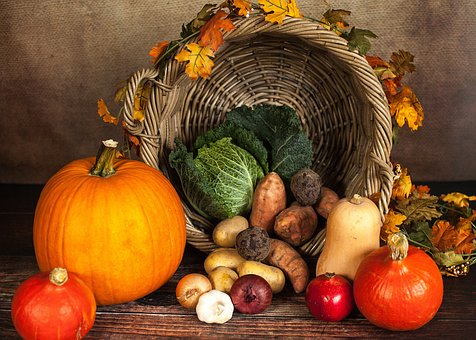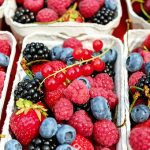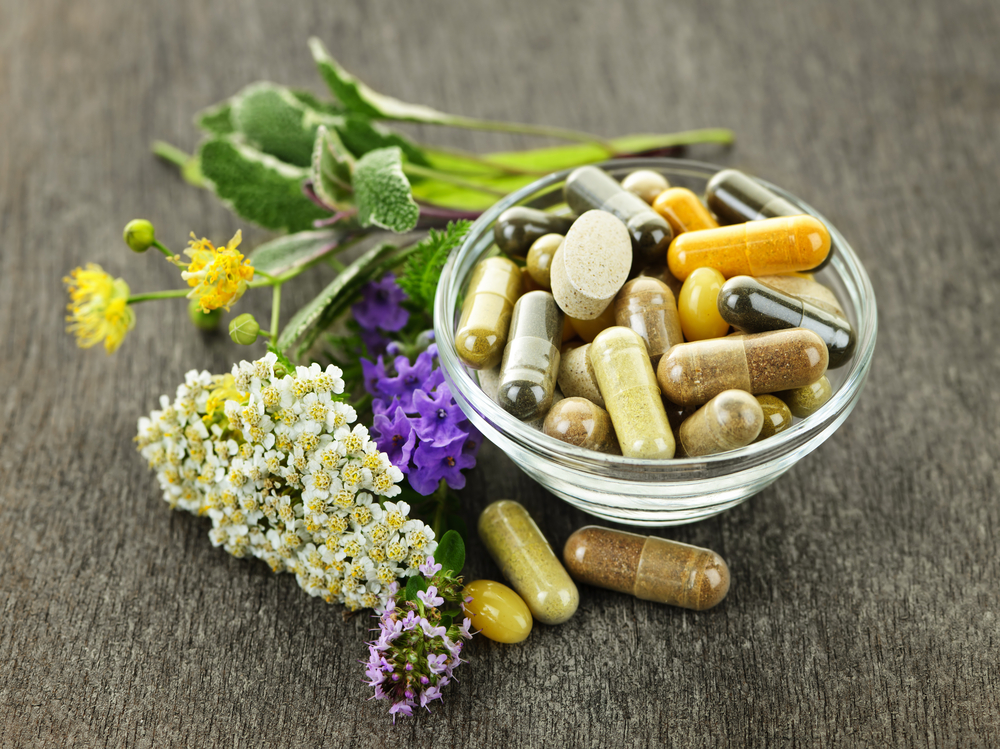Consuming fruits and vegetables during their proper season has an advantage that is not only beneficial to the environment, but also directly boosts your health. The micronutrient levels are the highest when vegetables and fruits are cultivated in the appropriate season for where they are native to.
The taste of various foods is greatly influenced by the duration of sunlight, the highest and lowest temperatures, the warmth, and the amount of moisture in the atmosphere. These basic, yet crucial, elements determine the nutrient content and thus the flavor. Organic farming techniques allow fruits to build up stronger antioxidants that are used to fight off disease without pesticides.
Seasonal Fall Fruits and Vegetables
It would be pointless to purchase tropical fruits in a rush in order to stay healthy during the fall, the best thing to do would be to select from the list provided …
Artichokes
Artichokes tend to be costly, but taking advantage of them while they are in season is highly beneficial. They consist of numerous antioxidants, especially phenolic compounds like chlorogenic acid, narirutin, and cynarin, and anthocyanins which help to protect against oxidative damage. Nevertheless, the most significant advantage of these substances is the considerable amount of silymarin that they contain. With this valuable nutrient, artichokes help:
- protect the liver against certain adverse effects
- regenerate liver cells damaged by the use of certain medicines and toxic substances such as alcohol, tobacco, and drugs
- stimulate protein synthesis in the liver, enabling damaged cells to be replaced more quickly by healthy cells
- promote bile flow
They also contain several prebiotics such as inulin. The body is unable to break down this polysaccharide, however it is eaten by the bacteria in the intestine. It encourages the development of helpful microbes in the digestive tract which assists in increased nutrient absorption and boosts immunity.
Pick artichokes that have bunched-together leaves, cracking marginally when squeezed, and with no black spots (indicating they recently were picked).
You should store the items in the fridge for a maximum of a few days, in a sealed bag, after wetting them with some water to keep them damp.
Chard
Chard is not a particularly well-known vegetable. The stalks of the vegetable have a similar flavor to beets, whereas the leaves are more like spinach. This vegetable possesses a variety of flavors, as well as a high quantity of vitamin K, which contributes to strong bones and helps with blood clotting. Iron and fiber that cannot be dissolved are found in it, and these aid in reducing constipation and regulating bowel movement.
Select the type of chard with reddish stems rather than pale ones, and look for leaves that are a deep shade of green. Keep it in the vegetable compartment of your refrigerator. When it’s time to prepare the meal, keep in mind that it is best to separate the leaves from the stalks as the two require different cooking times and the antioxidant properties of the food will not be affected regardless of the cooking method, as long as you don’t fry it.
Beetroot
Beetroot is not always the first option for shoppers when selecting vegetables, but it is fantastic for one’s health due to its remarkable level of antioxidant potency.
Eating food that contains lutein and zeaxanthin is especially advantageous for eyesight because these two compounds are heavily concentrated in the macula and can help to lower the odds of developing macular degeneration. Out of the over 750 carotenoids that exist in nature, just two of them are consumed in the human diet. These two are the only ones that are absorbed into the macula, a part of the eye, in order to support better vision in sunlight. Having an adequate amount of consumption is vital since the body can’t make them.
Beetroot is special among vegetables because it contains betalains, which are powerful and easily-absorbed antioxidants. The beneficial effects of its antioxidants, anti-inflammatories, and liver protection remain completely intact after digestion. The food item in question is high in vitamin K, which is why it is not suitable for anybody taking anticoagulants. It also has a lot of flavonoids. Beetroot leaf juice has a greater concentration of flavonoids than the juices of spinach and broccoli, both of which are noteworthy sources.
Store your beetroot in the fridge in a container that allows air circulation for up to two weeks. One can consume this item either uncooked, with its skin taken off and grated, or cooked. Nonetheless, it’s best to not remove the skin while preparing it in order to preserve the nutrients. Instead of boiling, you could cook it in a little olive oil at 250°C in the oven for approximately one hour.
Beetroot maintains its antioxidant properties even when cooked, unlike a lot of other veggies.
Broccoli
When consumed at the right time, broccoli has the most Vitamin C compared to all other brassicas. It offers countless health benefits.
Crucifers such as these are known for their glucosinolates, which have anti-cancer properties when they interact with bacteria in the human digestive tract and are converted into sulforaphane, indole-3-carbinol and diindolylmethane (DIM). Above all, this is why they are so important. These are thought to offer three main benefits:
- They reduce the risk of hormone-dependent problems. In both women and men, they affect estrogen metabolism, thus helping to lower the risk of some hormone-dependent cancers, such as cancer of the breast, uterus, and prostate.
- They improve benign prostatic hyperplasia (enlarged prostate). In men over 50, estrogen starts to accumulate in the prostate which contributes to its enlargement. DIM counteracts this by slowing down the metabolism of testosterone, and in particular, by preventing its conversion into estrogen. In this way, it improves prostate function and helps reduce the urge for night-time urination.
- They protect against cancer. Sulforaphane, indole-3-carbinol, and DIM all prevent the growth of certain cancer cells and promote their self-destruction (in a process called apoptosis).
Consuming broccoli can reduce your chances of developing cardiovascular disease, due to its abundance of kaempferol, a flavonoid which is also contained in tea. Also, similar to beetroot, this food source supplies lutein and zeaxanthin, promoting good eye health.
To get the most out of it, it is advisable to consume it uncooked or only slightly cooked. Cooking broccoli too long significantly decreases the amount of sulforaphane, but the brief heating of it will turn off the protein that prevents glucoraphanin from transforming into sulforaphane. Be sure to eat the stalks! Take the skins off and cut them up so that they will be done in the same amount of time as the heads.
Individuals who suffer from IBS may have a negative reaction to eating cruciferous vegetables like broccoli, which could include abdominal distress, bloating, and diarrhea. In those scenarios, it’s advisable to eliminate the food completely at first and then reintroduce it slowly while monitoring how the body responds and taking into account the individual’s sensitivity.
Apples
When autumn arrives, my mind is always drawn to apples, and I dearly enjoy taking part in picking them during this season.
You can have apples in a number of different ways; you could snack on one straight from the tree or make a yummy bite by combining it with a dollop of peanut butter.
Apple pie is another favorite among fall desserts. Stepping into your dwelling and taking in the aroma of an apple pie recently taken out of the oven is an intensely comforting experience!
You can take advantage of the large amount of apples you have by preparing applesauce or apple butter.
Brussel Sprouts
Lots of people hate brussels sprouts, but they shouldn’t. I am a big fan of having Brussel Sprouts as a side dish with a chicken breast, roast beef, or potatoes.
Divide your Brussel Sprouts into two pieces, partially simmer them, smash them thoroughly, and place them onto a baking tray.
Coat the ingredients with a preferred oil and add a pinch of red pepper flakes, salt, and pepper. Bake them until they are done to perfection, or look up some air fryer recipes.
It will be impossible for you to view brussel sprouts in the same way after this!
Cabbage
One of the most multidimensional vegetables is a cabbage head; it can be cut and pan-seared, placed in soup, and utilized as a wrapper.
Cranberries
Most people’s Thanksgiving plates would be incomplete without cranberry sauce.
Instead of getting cranberry sauce out of a can, I suggest you try making your own this holiday season!
It adds a burst of new flavor to your meals.
One of the things I relish doing in fall is baking some delicious Cranberry Orange Muffins.
Kale
I really enjoy kale as it is highly nutritious and can be used in many different dishes. It contains a high amount of antioxidants which is great for my health.
Kale can be cooked in various ways, such as roasting it in the oven to form kale chips, frying it on the stove top as an appetizing side dish, or consumed raw in a salad.
If I know I won’t be able to have any vegetables during the day, I really enjoy putting fresh kale into my morning smoothies.
Pears
Step aside apples; pears now have their time in the limelight.
Pears are a scrumptious fruit in the autumn and can be used in the same way as apples.
Pear pie, pear sauce, pear butter; you name it! I really enjoy making a pear salad during the autumn season as one of my favorite dishes featuring pears.
Remove the skin and cut your pears into pieces, then add lemon juice, olive oil, and a sprinkle of black pepper. Delicious!
Potatoes & Sweet Potatoes
Potatoes are a favorite during any season. No matter what it is called, people enjoy potatoes whether in the form of French fries, baked potatoes, or tater tots.
Pumpkins
We must definitely mention pumpkins when discussing fall fruits.
Pumpkins are a timeless symbol of the autumn season and can be utilized in a variety of ways from turning them into creative sculptures to using them to make yummy desserts.
A traditional pumpkin dessert is pumpkin pie. I adore pumpkin pie during Thanksgiving, but my ultimate favorite sweet treat is the cookie version of it that my mom bakes every year.
You can also enjoy pumpkin beers and pumpkin-flavored cocktails.
Turnips
A great root vegetable in the fall is turnips. They are not as biting and pungent as radishes, possessing a more gentle taste.
I enjoy munching on turnips uncooked in salads or slicing them into pieces to dip in dip made from chickpeas.
Using turnips instead of potatoes is a great way to stay on a low-carb diet.
I particularly enjoy mashed turnips smothered in an ample amount of cream cheese and butter!
Arugula
Arugula is one of those fall-time greens that has a love-it-or-hate-it reputation.
Those who are afraid might be intimidated by its aromatic and pungent taste.
I enjoy combining arugula with kale and spinach when making a stir-fry; the arugula contributes a slight pungency to the other vegetables.
Cauliflower
Cauliflower is one of the most versatile fall vegetables. When I’m on a low-carb diet, cauliflower is my go-to food.
Cauliflower is an outstanding alternative to rice and potatoes; some individuals even employ it to create pizza dough.
I have a great go-to recipe for hummus made along with cauliflower as a substitute.
Roasting pieces of cauliflower along with a garlic bulb, combining it all with extra-virgin olive oil and seasonings create an appetizing, low-carb hummus!
Celery
It is beneficial to keep celery on hand during the autumn season.
You can consume them uncooked, add them to your soups and smoothies, or you can make a dish with them as the main ingredient.
I prefer to have celery with a scoop of peanut butter on it, which is a straightforward way of consuming the vegetable. This scrumptious yet good for you treat will keep you satisfied without causing remorse.
Eggplant
Autumnal tones shine brightly in aubergine, and the dark violet makes a superb complement to any meal.
You can prepare eggplant parmesan by sautéing it in a pan with flour and butter, or you can use it as a replacement for the noodles in a lasagna!
Figs
Figs are a tasty fall treat. I enjoy consuming a fig in its most natural form by picking it straight from the tree. Finding fresh figs can be challenging, so an alternative way to enjoy them is to buy dried figs.
I incorporate dried figs into granola bars for a convenient breakfast to eat on the move.
Grapes
No matter how expensive they may be, grapes of all kinds are held dear by all. From red and white wines to Concord Grape Jelly, these fruits make sure to leave a lasting impression.
The most enjoyable approach I have for incorporating grapes is to put them in my chicken salad. They give the salad the ideal blend of zestiness and sugary goodness.
Parsnips
Parsnips resemble carrots, although they are less sugary and firm compared to the latter. Nonetheless, they are very delicious.









